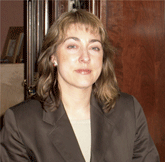Doing Business With U.S. Access Board

U.S. Access Board<br>1331 F St. NW, Suite 1000<br>Washington, DC 20004-1111<br>202-272-0080
U.S. Access Board1331 F St. NW, Suite 1000Washington, DC 20004-1111202-272-0080 1973 Emil Frankel, assistant secretary for transportation policy, Transportation Department About 30 The U.S. Access Board is an independent agency committed to accessibility for the disabled. It was founded to ensure all disabled persons have access to federally funded facilities, but in the 30 years since its inception, the board's mission has expanded to be a clearinghouse of information on accessible design and technology ? these are the people who brought you the Section 508 standards. By issuing guidelines and standards, the board ensures access to the buildings, transit systems, telecommunications and electronic and information technology as required by several laws, including the Americans with Disabilities Act.XXXSPLITXXX- Accessibility specialist, computer support and chief information officer 1999 Latham, N.Y. Fairfax, Va. Travel, music, oil painting, fine art Husband, Lex; two daughters, Saskia and Kyleigh. Also a Golden Retriever and a cat "The Dante Club" by Matthew Pearl Undergraduate degree from Rutgers University;master's degree from the University of Virginia Little: We fit the typical needs in technology that most agencies have. Our daily operational focus relates to e-mail, Internet access, VPN access for teleworking. We do have a focus on Section 508 with regard to assistive technology; because our technology is in this office, we want to make sure it's accessible to people regardless of their disabilities. Our standard is very high; we want to exceed the minimums if at all possible.We have a seat management contract with L-3 Communications. We outsource our hardware and software technology needs through that contract and use it for all our computer and telephone system services.Little: Our relationship with L-3 has been over five years, and it's worked well for our needs. We are a small agency, and with that seat management contract, we've been able to enhance our technology needs. We are redesigning our Web site through that contract. We also have enhanced activities with our telephone system. We're adding unified messaging software where we would be able to retrieve and play any kind of voice or wav files through [Microsoft] Outlook. And also to refresh our hardware and software every three years, which is something the staff love. Little: Our Web site, we really feel is a very effective way to distribute information to the public, because the customers can download, especially our publications and our accessibility guidelines and standards. We have online training. The Web site gets many, many hits; I think it's 37 million hits since 1998, and we've got 4.6 million user sessions; so that is a way for us to maximize our customer service. Again, because our documents are in html text and .PDF, our Web site is fully accessible to people regardless of their disabilities. We know specifically that between 1999 and 2002, any kind of information packets we would have distributed before, which include publications and print material, declined by 50 percent. Even distributing our guidelines, we went from more than 3,000 copies in 1999 to 1,300 copies in 2002. During that same time, our user sessions on our Web site increased sixfold, from about 200,000 in 1999 to about 1.2 million in 2002.It's great for us in terms of providing customer service, but it really shows us that our print materials are being requested less frequently than before, and our customers are making extensive use of our site to view the information they need. Little: I would say primarily a good understanding of Section 508. And then in terms of applying that, having people with a good flexibility in terms of how they view troubleshooting and network issues. Little: I think they seem to have a good idea what the standard says. And in terms of the application of the standard, there is probably a range of experience with that.Little: Based on the seat management contract, every three years we refresh our hardware and software, and in 2005 we'll have that refresh. We're looking at enhanced capabilities of the technology we have from the actual desktops. Probably also a continued focus on Section 508 and any kind of assistive technology that would be available to enhance our capabilities on our network and our Web site. Also the unified messaging software will be in place, that will connect our voice mail and computer systems, so we will be able to retrieve those voice and .wav files in [Microsoft] Outlook. It's up and coming, and we're all waiting for it.
www.access-board.gov
Founded:
Chairman:
Employees:
What it does: Full title:
Full title:
Took the job:
Hometown:
Home now:
Hobbies:
Family:
Currently reading:
Alma mater:
WT: Given what the agency does, are your technology needs different or unique from an agency's typical tech needs?
WT: How has outsourcing been working for you?
WT: How has technology made the agency's mission easier?
WT: What do you look for in companies with which you are thinking of doing business?
WT: Do most contractors have a good understanding of Section 508?
WT: A year from now, where do you see the agency's technology?
www.access-board.gov
Founded:
Chairman:
Employees:
What it does:

Susan Little
Took the job:
Hometown:
Home now:
Hobbies:
Family:
Currently reading:
Alma mater:
WT: Given what the agency does, are your technology needs different or unique from an agency's typical tech needs?
WT: How has outsourcing been working for you?
WT: How has technology made the agency's mission easier?
WT: What do you look for in companies with which you are thinking of doing business?
WT: Do most contractors have a good understanding of Section 508?
WT: A year from now, where do you see the agency's technology?
NEXT STORY: BAE climbs IT ladder with DigitalNet purchase

